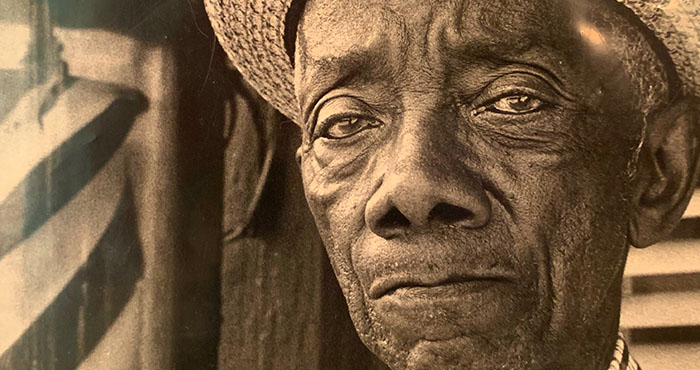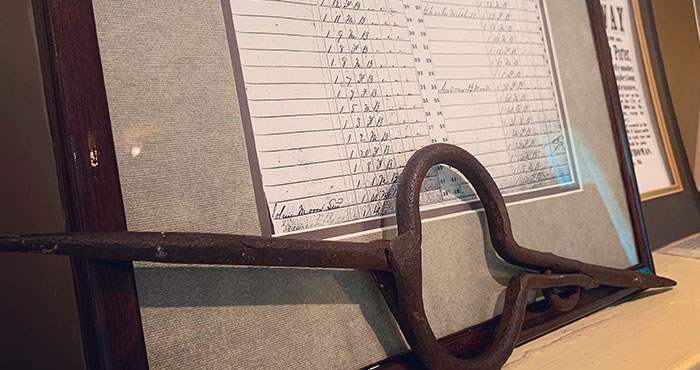

At the Person County Museum of History, it’s our job to find and catalog the stories of people in our community who have made a difference. That includes Judy Henry, G.L. Harper, and Leonidas Barry. All three of these Person County natives, in their own way, helped provide the spark that ignited the Civil Rights Movement and changed our views of African American culture from the classroom to the voting booth to the operating room.
Meet Judy Henry
Back in the 1850’s slavery was common practice in Person County as it was throughout the South. African Americans were traded amongst neighbors as property and only white men could vote. It was a dark time in our County’s history.
Judy Henry’s life as a slave gives us a glimpse of the social and political views of the time. Judy lived on the Hester Farm in Person County. A seamstress by trade, Judy found herself working primarily in the main house sewing garments and doing housework. Her family – mother, father, and brothers – had been shackled and sold to neighboring farms or traded for goods in states like South Carolina and Georgia. Her kids worked the tobacco fields with her husband and attended school in a makeshift barn separated from the white children.
Judy had only one possession, a small trunk, which contained her sewing materials, glasses, and a Bible. She was treated well enough by the Hester family, but she was still considered property and not a person. Her original bill of sale, like cattle or horses, contained her physical description, no name, and a value for tax purposes.
It’s thought that Person County served as a stop on the Underground Railway as escaped slaves made their way North to freedom. But it would be another century before Judy’s family and friends would be allowed in public schools, voting booths or local stores.
Meet G.L. Harper
When the Civil War ended, the first school for African Americans was built in Person County. The school was in the Bethel Community near the Virginia border. But it was not a school in the typical sense, but rather an old barn or pack house that had been converted.
These schools were all that black students had until G.L.Harper, a Person County local, worked and fought within the black community to raise funds for new schools in 1932. It took ten years to raise the funds and then apply for matching dollars from the Rosenwald Fund. Julius Rosenwald was the chief executive of the Sears Roebuck Company and a friend of George Washington Carver. He committed himself to helping build schools for black children in the South because local governments refused to do so.
Through the efforts of Harper and the local African American community, North Carolina had the highest number of Rosenwald Schools. Person County had five. G.L. Harper was hired as one of the first High School principals for this first all-black high school. Furnished with old furniture, used textbooks, and busses, the schools did not provide the best conditions for learning. But they were a symbol of what the local African American community could accomplish by working together. It was education that provided the first light to a new future for the African American community in Person County.
Meet Leonidas Barry
Born in 1902 in Person County, Leonidas Barry came into the world at a time of turbulence and change. His family was college-educated at a time when African Americans were still fighting for basic freedoms. Because of this, the importance of education would be a driving force behind his life choices and career.
Berry had a remarkable and innovative medical career that spanned over forty years. In that time, he became a world-renowned physician who dedicated his life to the pursuit of racial, physical, and economic parity for African Americans. He did this through medicine, teaching, writing, lecturing, and community service.
Berry was a pioneer in gastroscopy and gastroenterology. His expertise in the study of the human stomach was acclaimed worldwide beginning in the 1930s due to his ability as a physician and his pioneering success in the use of the endoscope. Berry produced several books, video recordings, and motion pictures to illustrate the study of the stomach and other organs affected by digestive disorders.
In his fight against racial discrimination, Berry made unprecedented achievements in hospitals, medical societies, and medical associations around the world. He lectured worldwide as an individual and as a representative of several medical associations and societies. Contrary to theories that resonated throughout the medical community, when evaluating illnesses, Berry placed more emphasis on physical and economic causes than on race.
Through his publications, lectures, and worldwide presentations, Berry strove to expand human knowledge and awareness. He contributed 84 articles to national and international journals and societies, wrote six books, and became the President of the National Medical Association.
Today, you can find out more about these inspiring leaders of the African American community at the Person County Museum of History. View artifacts, read personal histories, and see how even the smallest steps can help can the world. Visit today and find out more about how we are Making History Personal.


